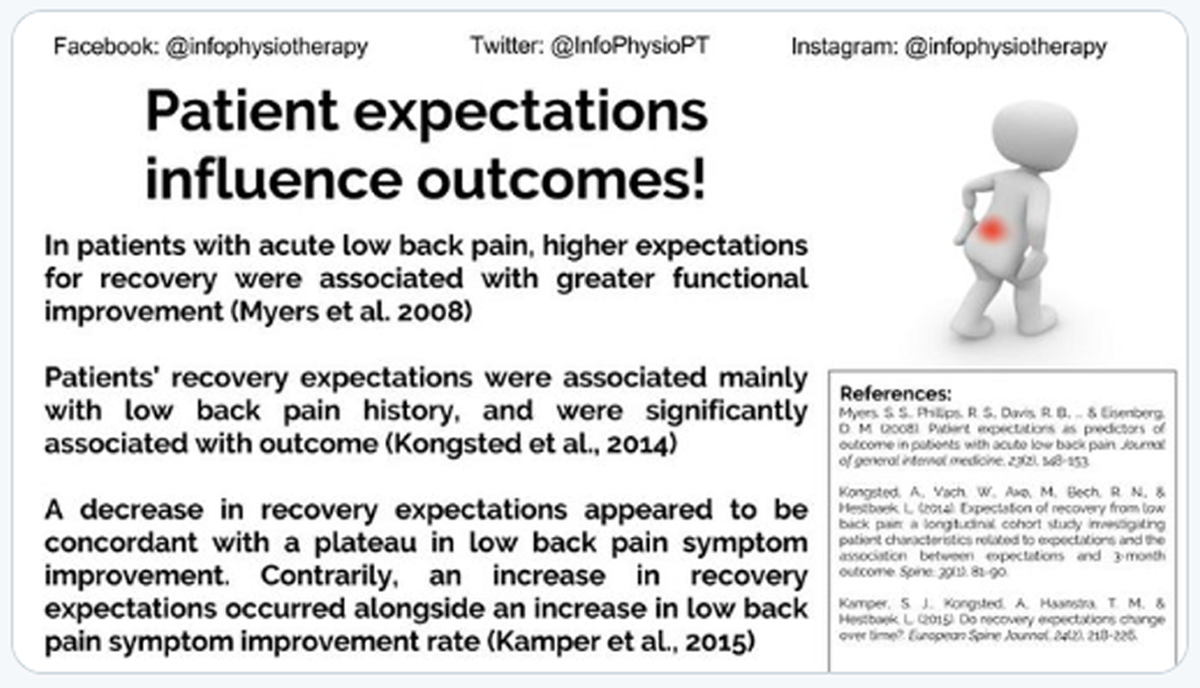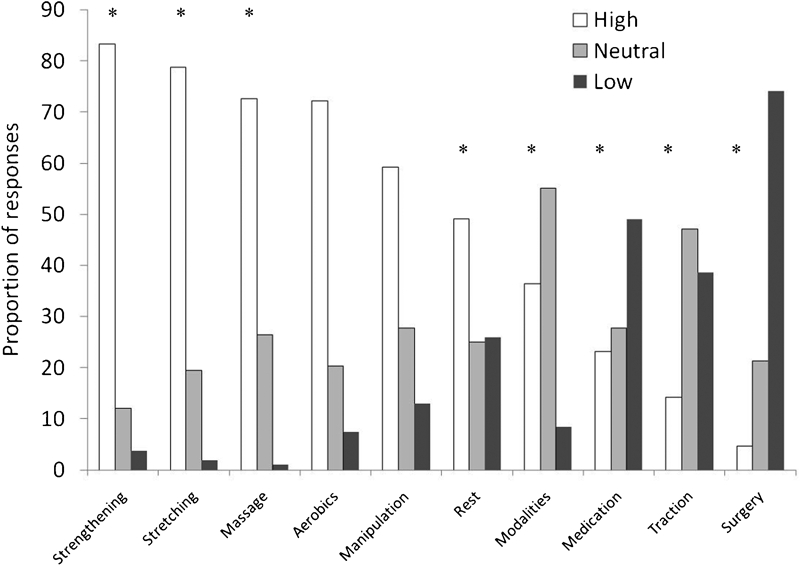The Influence of Expectation on Spinal Manipulation Induced Hypoalgesia: An Experimental Study in Normal Subjects
SOURCE: BMC Musculoskelet Disord. 2008 (Feb 11); 9: 19
Joel E Bialosky, Mark D Bishop,
Michael E Robinson, Josh A Barabas,
and Steven Z George
University of Florida Department of Physical Therapy,
Gainesville, Florida, USA.
BACKGROUND: The mechanisms thorough which spinal manipulative therapy (SMT) exerts clinical effects are not established. A prior study has suggested a dorsal horn modulated effect; however, the role of subject expectation was not considered. The purpose of the current study was to determine the effect of subject expectation on hypoalgesia associated with SMT.
METHODS: Sixty healthy subjects agreed to participate and underwent quantitative sensory testing (QST) to their leg and low back. Next, participants were randomly assigned to receive a positive, negative, or neutral expectation instructional set regarding the effects of a specific SMT technique on pain perception. Following the instructional set, all subjects received SMT and underwent repeat QST.
RESULTS: No interaction (p = 0.38) between group assignment and pain response was present in the lower extremity following SMT; however, a main effect (p < 0.01) for hypoalgesia was present. A significant interaction was present between change in pain perception and group assignment in the low back (p = 0.01) with participants receiving a negative expectation instructional set demonstrating significant hyperalgesia (p < 0.01).
There are more articles like this @ our:
CONCLUSION: The current study replicates prior findings of c- fiber mediated hypoalgesia in the lower extremity following SMT and this occurred regardless of expectation. A significant increase in pain perception occurred following SMT in the low back of participants receiving negative expectation suggesting a potential influence of expectation on SMT induced hypoalgesia in the body area to which the expectation is directed.
From the Full-Text Article:
Background
A growing body of evidence supports spinal manipulative therapy (SMT) as an effective treatment for low back pain. [1–6] Furthermore, the evidence is particularly strong when patients are classified into subgroups by patterns suggesting the likelihood of a favorable response. [2, 3, 6] Despite the positive findings of clinical trials, the mechanisms through which SMT acts are not established.
Hypoalgesia has been associated with SMT and has a postulated involvement in the clinical effectiveness. [7–16] For example, Vicenzino et al [14] observed greater pain free grip and pain pressure threshold in the forearm following SMT to the cervical spine. A prior study by our group found hypoalgesia of c- fiber mediated pain as measured by lessening of temporal summation in the lower extremity following SMT to the lumbar spine. [7] Temporal summation results from multiple painful stimuli of the same intensity applied at a frequency of less than 3 seconds and has been observed in both healthy subjects [17–19] and those experiencing chronic pain. [20, 21] Activation of the dorsal horn of the spinal cord has been directly observed with temporal summation in animal studies. [22–25] Subsequently, we interpreted our prior findings of hypoalgesia of temporal summation following SMT in healthy participants as indicative of a pain inhibiting effect occurring at the dorsal horn.
Read the rest of this Full Text article now!





Leave A Comment